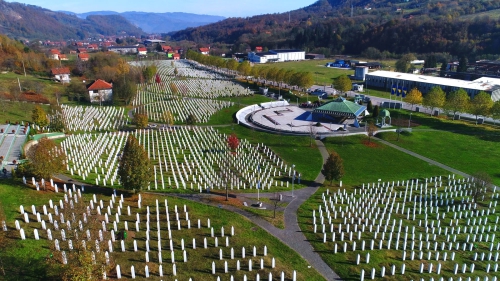Mushroom Clouds Over Nevada
As golden anniversaries go, it's a somber occasion. In a forlorn expanse of desert scarcely an hour's drive northwest of Las Vegas, on Jan. 27, 1951, the Nevada Test Site went into operation by exploding an atomic bomb.
During more than a decade, mushroom clouds often rose toward the sky. Winds routinely carried radioactive fallout to communities in Utah, Nevada and northern Arizona. Meanwhile, news media dutifully conveyed U.S. Atomic Energy Commission announcements to downwind residents: "There is no danger."
In the region, journalists followed the national media spin and threw in some extra bravado. "'Baby' A-Blast May Provide Facts on Defense Against Atomic Attack," said a headline in the Las Vegas Sun on March 13, 1955.
That week brought the unveiling of a taller detonation tower -- 500 feet instead of the previous 300-foot height. The Las Vegas Review-Journal informed readers that the change would make them even more secure: "Use of taller towers from which atomic devices are detonated at the Nevada Test Site introduces an added angle of safety to residents living outside the confines of the Atomic Energy Commission's continental testing ground, nuclear scientists believe."
Eleven days later, when the "added angle of safety" did not prevent a hot storm of radioactive particles from blanketing the city, the Review-Journal reported that the day's events were benign. "Fallout on Las Vegas and vicinity following this morning's detonation was very low and without any effects on health," the newspaper explained.
Pundits of the day were eagerly patrolling ideological frontiers for the benefit of all Americans. The Los Angeles Examiner published a column by International News Service writer Jack Lotto under the headline "On Your Guard: Reds Launch 'Scare Drive' Against U.S. Atomic Tests." The article warned: "A big Communist 'fear' campaign to force Washington to stop all American atomic hydrogen bomb tests erupted this past week."
It was a popular theme among prominent commentators like syndicated columnist David Lawrence, whose wisdom appeared in the Washington Post and other leading newspapers. "The truth is," he wrote in spring 1955, "there isn't the slightest proof of any kind that the 'fallout' as a result of tests in Nevada has ever affected any human being anywhere outside the testing ground itself."
By then, children and others living in downwind areas were beginning to develop leukemia. As time passed, people in affected areas suffered extraordinarily high rates of cancer and thyroid ills. Functioning in tandem, the news media and the federal government continued to deny that nuclear testing was a health hazard.
In August 1980, nearly three decades after the Nevada site opened for nuclear business, the U.S. House of Representatives Subcommittee on Oversight and Investigations concluded: "All evidence suggesting that radiation was having harmful effects, be it on the sheep or the people, was not only disregarded but actually suppressed."
That assessment was no surprise to thousands of downwind residents like Jay Truman, who grew up in southwestern Utah under the shadow of the test site. After watching many friends die, he had no interest in pretending that the U.S. government did not kill his schoolmates.
When I met Truman in 1980, he was already an expert on nuclear testing. Today, as director of the Downwinders organization (www.downwinders.org), he's still fighting the good fight.
From the Rockies to remote Russian sites, nuclear industries have taken an enormous toll. Victims include Native American uranium miners, nuclear-plant workers and far-flung residents, soldiers exposed to atomic bomb tests at close range, Pacific islanders, and people whose lives were forever changed during a few split seconds in Hiroshima and Nagasaki.
"Nuclear testing made the Cold War possible," Truman said a few days ago. "Without it, humanity could never have developed and deployed the weapons that still stand ever-ready to wipe our species off this planet." Unable to admit the inevitable health effects of nuclear tests, "all governments of all testing nations learned how to -- and perfected being able to -- lie to their own citizens."
Fifty years after the first mushroom cloud overshadowed the Nevada desert, military contractors and their allies are eager to spread the news about the latest technologies offering "an added angle of safety." In 2001, Star Wars is back on the media horizon. It's never too late to make a killing.
_________________________________________________
Norman Solomon is a syndicated columnist. He co-authored (with Harvey Wasserman) the 1982 book "Killing Our Own: The Disaster of America's Experience With Atomic Radiation."

















